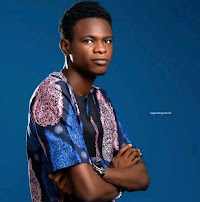Kaka are a tribe of about 22,000 people who live south of Gembu on both sides of the Nigeria-Cameroon border in Taraba State. According to tradition, they came from east to Cemeroon. Due to various factors and the ceaseless wars of the Fulani, they moved up to the Mambilla plateau. Presently, some of them now settle in other parts of the state, like Gashaka.
The Kaka women have marks on the sides of the mouth and a design on the abdomen. They also have holes in the nose and lower lip for decoration.
They are mostly farmers, hunting in the dry season, their main crops are corn, cocoyam, and rafia palm nuts. A few are traders.
Many of them have been to school. As back as in the 70's, most parent allowed their children to go to school. There were primary schools in Antere, Warkaka and a number of other villages.
Under the Kaka culture, a boy who cries when he is circumcised is considered to be a coward. Excessive bleeding during circumcision is believed to have been caused by someone bewitching the boy, or if his father has not paid all the bride-price for his mother. Sacrifices are need to save the boy's life.
A boy can be initiated in the Soh cult any time after he is circumcised. The boys are taken to the shrine where the gods are kept. This ceremony is performed in January or February, once one has been initiated, he is recognized in the society and has authority to express his opinion publicly like any other man.
Divorce is not common because after a man has paid the pride-price on a woman, any child she bears, even for another man, belongs to the first husband. Polygamy is common, and parents assist a young man to pay for his first wife.
When an old person dies, the number of days the masquerade dances and the number of days the corpse is kept before burial depends on the degree of respect accorded to the deceased. The masquerade dances on the grave.
The bereaved shave the hairs on their heads. Chiefs are not buried immediately. The chief priest and some religious leaders remove and inspect the dead chief's stomach and heart to find out if he was a wizard. The same is done to any man suspected of witchcraft. The chief is always suspected because he is directly involved with the gods and powers.
A corpse is buried close to the house because they believe that the person is still a part of the family. If it is their grandfather, they may build a little hut over the grave where the family can meet to consult their ancestor whenever there is any misfortune. If the funeral customs are not carried out properly, they believe that the ancestors will cause serious sickness.
Three days after the burial, there is a cleansing ceremony called the small Bum. Some days later, the children of the deceased remove his skull and put it on a hill called Ndasoye ( hill of the skull ). This is done to appease their ancestors, it is believed to bring peace to the family or clan. A year after the burial, they do the large Bum ceremony- the last mourning.
The Kaka people believe in Nwi, the supreme God who stays in heaven and cannot be easily contacted by human beings. Objects and images that represent other gods are kept and used to contact him.
Nwantap is the god who guards the whole village. Confession is made to him because he is the most feared and able to punish. He has power to curse and bless. There is a festival in honour of Nwantap every year for two days in March. There is no dancing or drumming, but special songs are sung reverently to him.
Ngam is the god they believe can reveal secrets. He is consulted to find out the cause and outcome of a sickness.
Tantseb is the god of peace. He is consulted when one breaks the regulations of the society. He settles quarrels in homes due to immorality.
Kayam is the god who serves as a messenger. His juju goes from family to family asking for sauce ingredients for a feast prepared for all the gods ( Njam Rum). Kayam askes women, not men, and those who do not give, he curses. In honour of himself and Soh, a festival is celebrated every year in June or July. During this ceremony, Sotap, another god, disciplines people who break the rules of the society. As his masquerade passes, each person must bow or be beaten.
Soh is brought out of the shrine once a year during the weeding of the corn fields. The period involves wrestling and the men beat each other with sticks to demonstrate who is brave or a coward. No women is allowed to see it or she will get sick and die.
Rum functions mostly in burials, when an important person is dead, the Rum masquerade cries and recalls the good and bad of the person, causing the crowd to lament more. They believe he (it) has the power to curse or bless his subjects. People can also get charms from him (it) for protection against theft.
Chimbiyir is the god of burials. He (it) sympathises with the bereaved family. Every year, toward rainy season, there is a three day festival called Nhum-Chimbiyir for (it) him. Cham used to be a cult, but it's now mainly a cultural dance.
All these gods can be found in one village, and they function together. Apart from their own gods and images, there are those brought or borrowed from neighboring tribes. These include Mabu from the Panso tribe, Sotap from the Mambilla, Nwarong from the Kambu tribe and Maka which is found among the Antere group.
The Kaka people...
By Chrispodiah Emmanuel.
The Lyon Of The Tribe, King Of The Jungle.




Love What You Read? Comment Here